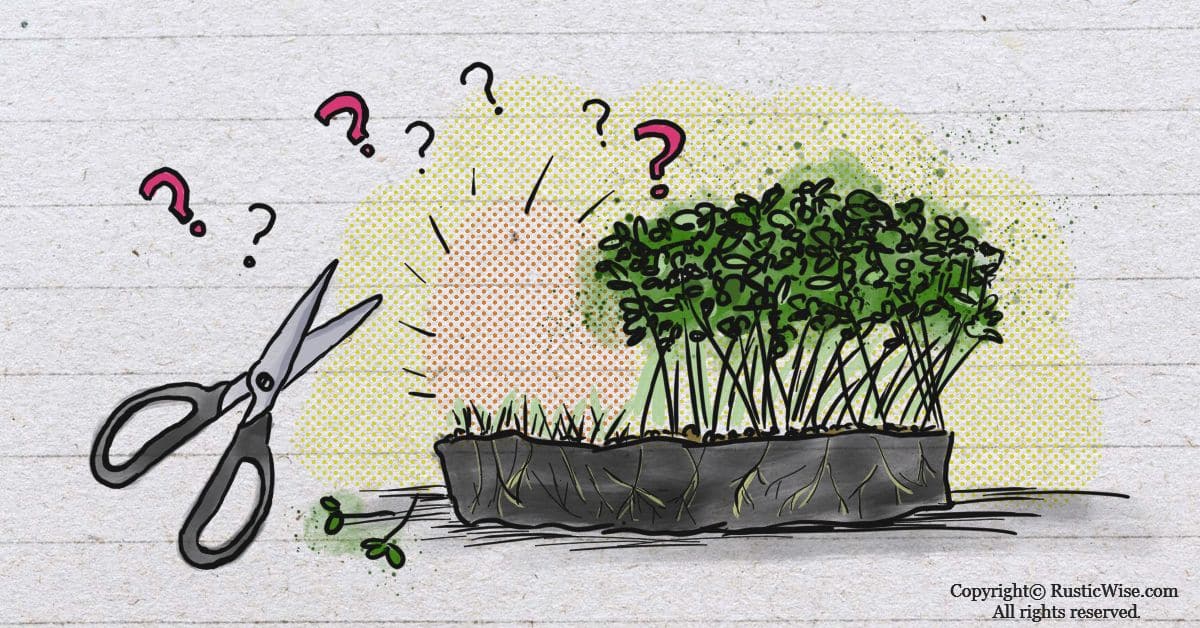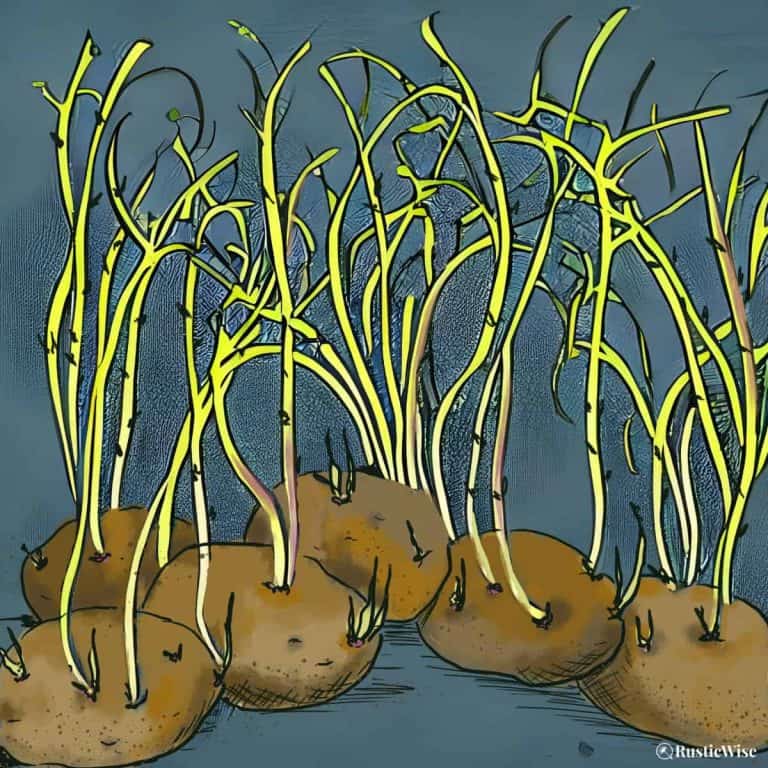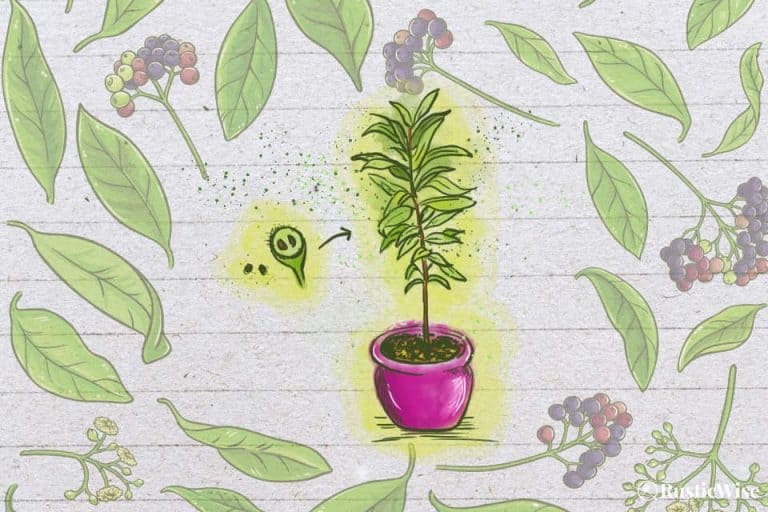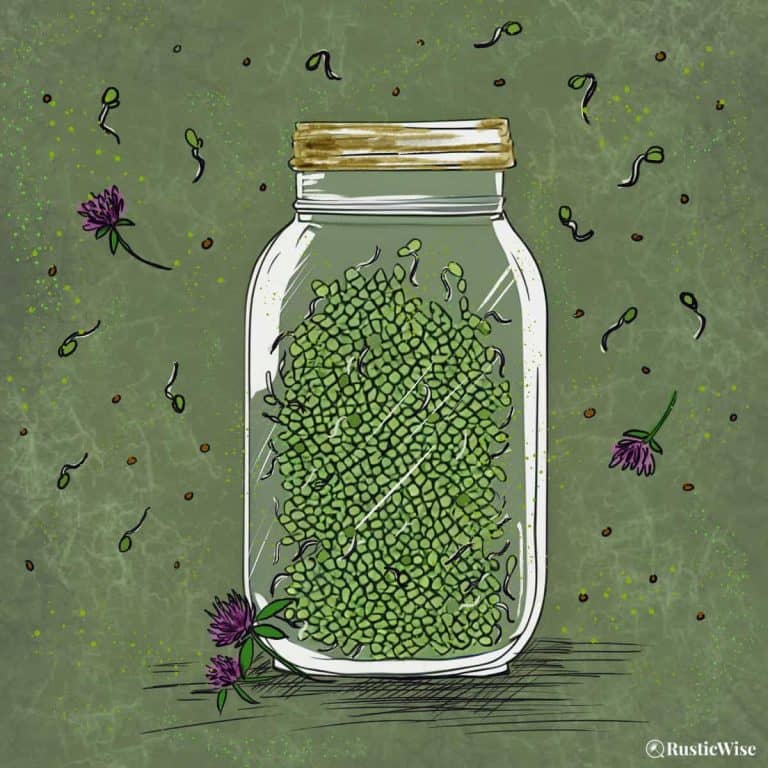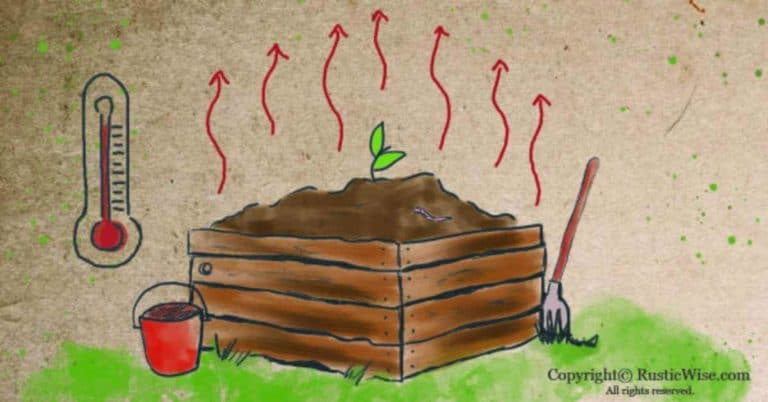Do Microgreens Regrow After Cutting?
Do microgreens regrow after cutting? This is a common question that many people ask, and the answer is not as straightforward as you might think. We’ll explore why most microgreens don’t regrow after being cut, what kind of microgreens can be harvested more than once, and how to make your second harvest successful. We’ll also cover some tips on what to do with the leftover soil.
Microgreens are becoming more popular. Understandably, you want to get the most bang-for-your-buck by possibly re-harvesting these tiny greens.
Sorry to disappoint … most types of microgreens will not grow back if you cut them—but there are a few exceptions! Some varieties of microgreens such as pea shoots can grow back for a second or third harvest. We’ll cover the details in this article.
If you’re interested in growing your own microgreens at home with the intention of harvesting them multiple times, then read on for some tips and tricks that may help make things easier for you!
Do microgreens regrow after cutting? Why most don’t.
You may have heard of cut-and-come-again types of garden vegetables. As the name implies, these veggies grow in abundance and regrow after harvesting (if harvested correctly!). These types of vegetables are typically rosette-shaped (think leafy greens like kale, spinach, or Swiss chard).
Unfortunately, most microgreens don’t fall under the category of cut-and-come-again.
If you think about the manner in which microgreens are grown—densely sown and in small containers—it kind of makes sense that most of them don’t regrow after being harvested.
Here are a few reasons why most microgreens don’t regrow for a second harvest.
Small and cramped space
The very thing that makes growing microgreens attractive to urban gardeners, or anyone short on room (making use of every square-inch of space), is the same thing that contributes to the lack of success in regrowing microgreens after harvesting. When plants are grown in cramped quarters, there’s more competition for nutrients, light, and water. This decreases the chance of healthy regrowth after harvesting.
Fragile and young
Microgreens are truly delicate greens. While mature plants have the ability to heal wounds and regenerate new growth, microgreens are just developing when harvested, and therefore don’t regrow well after being cut. Remember that microgreens are younger than even “baby greens.” We harvest these tiny greens during their infancy (or pre-infancy)! If you harvest your microgreens just above the soil line like most people do, you’re essentially chopping off the entire plant. Stunted growth and stress are a result of this—factors that don’t make for a happy plant!
Tiny roots
Microgreens grow their root systems from tiny seedlings, and those few short weeks of growth just can’t provide enough time for the roots to grow in any meaningful way before being harvested. If you’ve ever taken a closer look at the roots of your latest microgreens tray, you’ll see a tangled mess that’s not ideal for long-term growth.
Prone to disease and mold
In their weakened state immediately after being harvested, your batch of microgreens is more susceptible to mold or other diseases taking root in the tray.
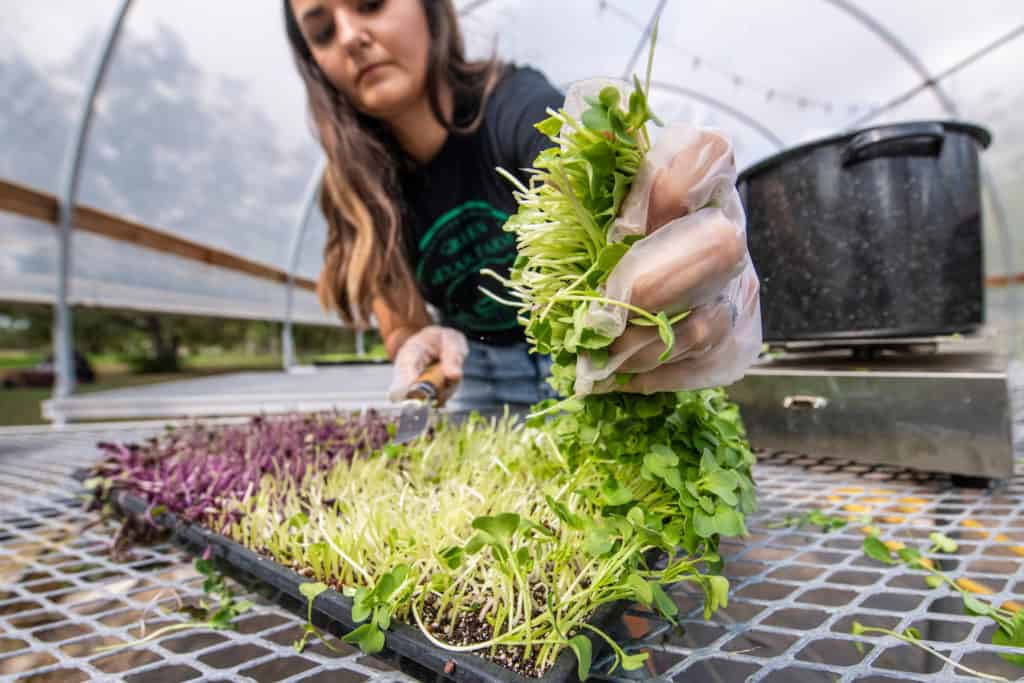
Credit: U.S. Department of Agriculture /Lance Cheung/ Flickr
Pros and cons of trying for a second harvest
The downsides of trying to regrow most types of microgreens heavily outweigh the benefits. Let’s take a closer look.
Pros
The main benefit of trying to regrow microgreens would be to save money (although the savings would be negligible). Perhaps you may save a few dollars on seeds and a bit of growing medium if you’re lucky to coax out a second harvest.
Cons
Here are a few downsides associated with growing a second batch of microgreens:
- Less tasty and nutritious: Isn’t one of the best reasons to grow your own microgreens to experience farm-fresh greens? Unfortunately, most second batches have lost some pizzazz from the first-cut, and are lacking in nutrients to boot. Second-batch microgreens are typically less flavorful with an altered texture.
- It takes longer than you think: Growing a second batch of microgreens is more time-consuming than you may think. It would make better use of your time to start from scratch with a new and healthy batch of microgreen seeds.
- More prone to disease: As we mentioned above, microgreens are meant for a short growing period and are meant for harvesting when only a couple of inches tall. The longer you leave them to grow, the more susceptible they are to disease.
- A waste of resources: Growing a second batch is also wasteful in terms of microgreen seeds and soil nutrients. It’s just not worth it when most varieties won’t even regrow after cutting.
Tip: If you’re trying to regrow your microgreens for fun, by all means, go for it! However, if you’re trying to save time or money, it’s not really worth it. If you’re growing microgreens for profit, most growers abide by a one-cut standard according to Johnny’s Seeds.
Which microgreens regrow after harvesting?
Before you give up all hope, you should know that some types of microgreens do regrow.
Most varieties of peas, beans, and leafy greens including kale and spinach, often regrow after being harvested. Other types of microgreens that may regrow are basil, coriander, fenugreek, oregano, and sage.
But we’re not making any promises!
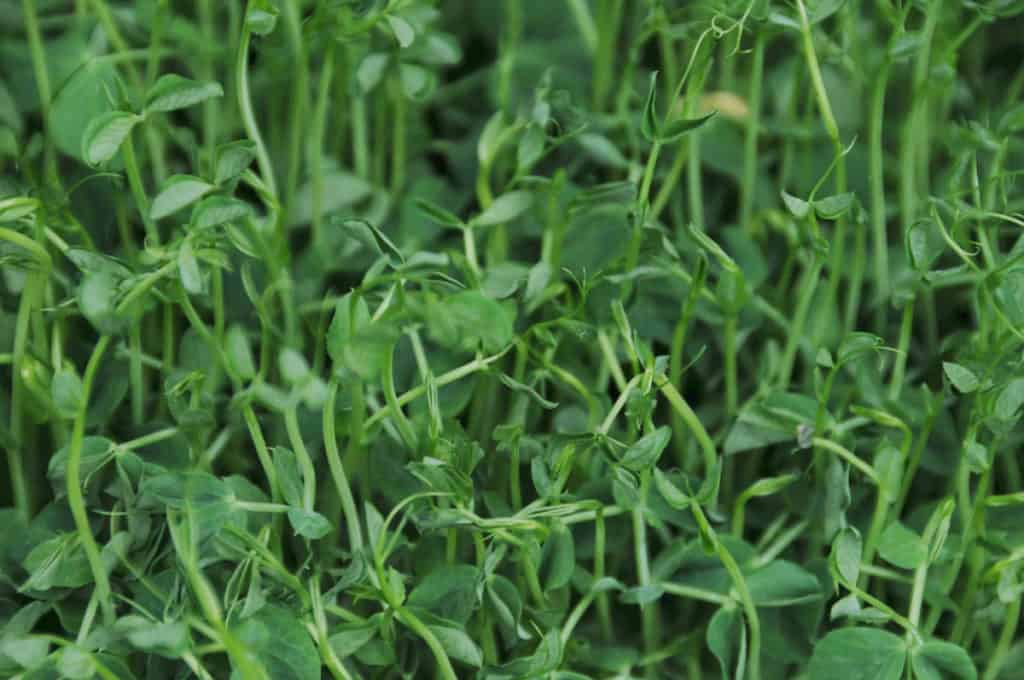
Credit: Heather / Flickr
Tips on how to harvest microgreens for regrowth
The way in which you harvest your tray of microgreens can have an impact on the chances of a second or third harvest.
- Cut above the lowest set of leaves on the plant. This gives the plant a chance to put energy into growing new leaves and stems. By harvesting in this manner, you’re able to (hopefully) preserve some meristem. Meristem is a special type of plant tissue that allows plants to continue to divide and grow. You can find apical meristems on a plant’s roots and shoot tips. Another benefit of leaving a set of lower leaves on the plant is that this allows the plant to continue with photosynthesis.
- Make a clean cut with sharp scissors. Whether you choose to use a pair of scissors, a knife, or another harvesting tool, just make sure it’s clean and sharp! This lessens the chance of bacteria getting onto your microgreens.
- Microgreens in deeper soil and larger containers may have a better chance of regrowing.
- Continue to water your microgreens regularly and monitor your microgreens for signs of mold or other diseases. Avoid overwatering as this can cause root rot or encourage mold growth. Mold development is more prevalent in damp growing trays. Once you harvest the microgreens, the stems are in a fragile and vulnerable state. They can’t defend against mold or fungal issues.
- Try bottom watering to further prevent mold growth. The way in which you water microgreens is important, especially when trying for a second batch. When you top water your young greens, not only do you risk the chance of damaging the delicate shoots, you also increase the chance of overwatering which may lead to mold growth and a host of other types of diseases.
What to do with the leftover soil from microgreens
While some people suggest flipping over your potting soil and reusing, we say nay. It’s generally not a good idea to reuse the soil leftover from your tray of microgreens. This could be harmful to your next round of microgreens and lead to problems such as mold or other diseases.
If you have a backyard compost or a vermicompost, the leftover soil containing the microgreens roots would be a great nutrient-rich material to add to it. Don’t worry, the composting process should be fairly quick as your potting mix contains tiny roots!
If you don’t have a backyard compost or vermicompost, you could try breaking down the soil and mixing it into your garden soil, or using it as mulch.
Other related questions
Do sunflower microgreens regrow?
No, unfortunately sunflower microgreens don’t regrow after harvesting. As sunflower microgreens are commonly paired together with pea shoots (a microgreen that does regrow), many assume that they can regrow too. Sadly, this isn’t the case.
Are microgreens just baby plants?
No microgreens are different from baby leafy greens like spinach or kale. If you place sprouts, microgreens, and baby plants on a timeline, they would be in that order (with sprouts being the youngest form of growth, microgreens coming next, and “baby” plants the oldest of the group).
The word “microgreen” is actually a marketing term that refers to the smallest of greens, which are grown in soil (or another growing medium). Microgreens are plants that have been harvested before they’ve matured and become “baby” plants.
How many times do microgreens regrow?
There’s not a hard and fast answer as this really depends on the type of microgreen that you’re growing along with the growing conditions. However, some types of microgreens like pea shoots, coriander, and fenugreek may produce up to three harvests!

Author: Josh Tesolin
Josh is co-founder of RusticWise. When he’s not tinkering in the garden, or fixing something around the house, you can find him working on a vast array of random side projects.

